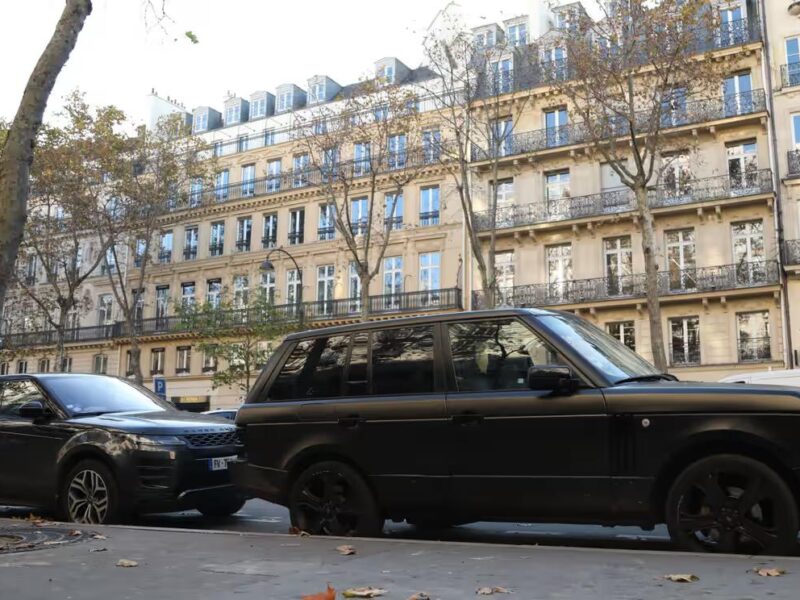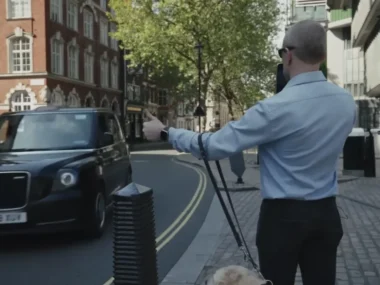Bigger cars are more likely to harm people, emit more poisonous gases, and outgrow city architecture.
According to the Guardian, new automobiles in the EU and UK have grown 1cm wider every two years, mainly to the popularity of huge luxury SUVs.
“It’s unrelenting,” said James Nix, an analyst at the Transport and Environment (T&E) campaign organization who wrote the report. “Spurred on by sales of the largest SUVs, vehicles are getting wider every year.”
According to the survey, half of new automobiles are now too large to fit in parking places designed to meet the minimum on-street criteria in several nations. The average width of a new car in the EU and UK surpassed 180cm in the first half of 2023, having increased by an average of 0.5cm per year since 2001.
“That may not sound like a huge figure,” Nix added. “But the reality is that – unless there is reform – a cohort of large luxury SUVs and pickups will become as wide as trucks and buses.”
Large cars are more likely than small cars to kill people in accidents because they weigh more and have lofty front ends that trap victims beneath them rather than knocking them to the side. They also emit more poisonous gases into the atmosphere and take up more space on roads and pavements.
For some cars developed decades ago, the requirement to integrate safety equipment such as airbags and crumple zones is one of the reasons why later versions have expanded in size. However, the recent trend is driven by people purchasing much larger vehicles, making roads more dangerous.
In the mid-1990s, the EU prohibited vehicles wider than 2.55 metres to prevent trucks and buses from becoming excessively huge. However, the Act did not establish separate restrictions for cars, which researchers claim have begun to exceed critical thresholds for which roads and towns were not constructed.
Ahead of a proposed change of EU vehicle laws, campaigners have urged MPs to endorse a clause requiring the European Commission to reconsider the width restriction. They say that the move toward larger cars has restricted room for other road users and increased risk.
Crash statistics from Belgium from 2017 to 2021 reveal that a 10cm increase in vehicle front height increases the chance of fatality by 30% when a car collides with a pedestrian or bike, according to a study by the Vias Institute, formerly the Belgian Institute for Road Safety.
Nix, who lives in Brussels and has two young children, stated: “I have three and five-year-old children, and we’re all about encouraging them to cycle. But, as a man in his mid-40s, I’m growing increasingly terrified by massive oncoming trucks on Brussels streets.”
The increase in car size also presents problems for its drivers. According to the survey, huge luxury SUVs up to 2 metres wide no longer fit in off-street parking. According to the survey, they also provide insufficient space for passengers to enter and exit vehicles in average off-street locations, which are roughly 2.4 metres wide.
According to Giulio Mattioli, a transportation expert from Technical University Dortmund, “Too much urban space is allocated to cars in cities – including free parking at the taxpayers’ expense for which little justification exists.”
Even in trailblazing capitals like Paris and Barcelona, where people have pushed hard to reclaim roadways for walking, biking, and relaxing, cars take up more than half of the street space. On top of that, added Mattioli, cars in many cities are occasionally parked illegally, with insufficient enforcement of parking restrictions.
“The fact that cars are getting bigger is likely to make the situation even worse,” Mattioli said. “It could also lead policymakers and planners to increase the standard measures of parking spaces, which could result in a vicious circle of ever-increasing size of cars.”
Paris may become the first major European capital to address this trend next month, when it holds a referendum on higher parking fees for heavier vehicles. A similar initiative is scheduled to begin in Lyon in the coming months.
France has battled the trend toward heavier cars more than the other of Europe’s major economies. Since 2008, customers who buy a cleaner car receive a cash benefit, while those who acquire a dirty car receive a malus, or penalty. In 2022, the government expanded the scheme to include penalties for the weight of an automobile.
“That’s definitely one way to go because it could be budget-neutral,” says Gracia Brückmann, a transport policy expert at the University of Bern. “[That] makes it easier to sell it to the public or taxpayer.”











